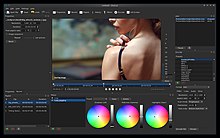
Video editing software, or a video editor is software used performing the post-production video editing of digital video sequences on a non-linear editing system. It has replaced traditional flatbed celluloid film editing tools and analog video tape editing machines.
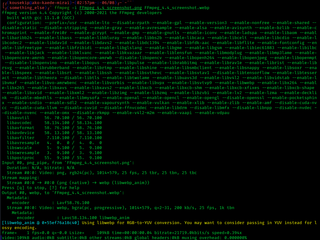
FFmpeg is a free and open-source software project consisting of a suite of libraries and programs for handling video, audio, and other multimedia files and streams. At its core is the command-line ffmpeg tool itself, designed for processing of video and audio files. It is widely used for format transcoding, basic editing, video scaling, video post-production effects and standards compliance.
Matroska is a project to create a container format that can hold an unlimited number of video, audio, picture, or subtitle tracks in one file. The Matroska Multimedia Container is similar in concept to other containers like AVI, MP4, or Advanced Systems Format (ASF), but is an open standard.
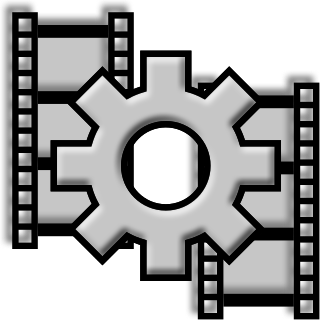
VirtualDub is a free and open-source video capture and video processing utility for Microsoft Windows written by Avery Lee. It is designed to process linear video streams, including filtering and recompression. It uses AVI container format to store captured video. The first version of VirtualDub, written for Windows 95, to be released on SourceForge was uploaded on August 20, 2000.
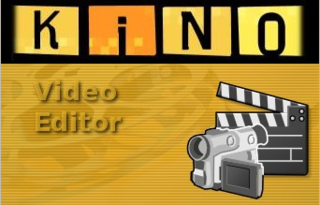
Kino is a discontinued free software GTK+-based video editing software application for Linux and other Unix-like operating systems. The development of Kino was started at the end of 2000 by Dan Dennedy and Arne Schirmacher. The project's aim was: "Easy and reliable DV editing for the Linux desktop with export to many usable formats." The program supported many basic and detailed audio/video editing and assembling tasks.

Avid Media Composer is a film and video editing software application or non-linear editing system (NLE) developed by Avid Technology. Initially released in 1989 on Macintosh II as an offline editing system, the application has since evolved to allow for both offline and online editing, including uncompressed standard definition (SD), high definition (HD), 2K and 4K editing and finishing. Since the 1990s, Media Composer has been the dominant non-linear editing system in the film and television industry, first on Macintosh and later on Windows. Avid NewsCutter, aimed at newsrooms, Avid Symphony, aimed at finishing, were all Avid products that were derived from Media Composer and share similar interfacing, as were Avid Xpress Pro and its predecessor Avid Xpress DV, which were aimed at the lower end of the market.

Avidemux is a free and open-source software application for non-linear video editing and transcoding multimedia files. The developers intend it as "a simple tool for simple video processing tasks" and to allow users "to do elementary things in a very straightforward way". It is written in C++ and uses Qt for its graphical user interface, and FFmpeg for its multimedia functions. Starting with version 2.4, Avidemux also offers a command-line interface, and since version 2.6, the original GTK port has not been maintained and is now discontinued.
This is a comparison of non-linear video editing software applications. See also a more complete list of video editing software.

Kdenlive is a free and open-source video editing software based on the MLT Framework, KDE and Qt. The project was started by Jason Wood in 2002, and is now maintained by a small team of developers.
This page provides a comparison of notable screencasting software, used to record activities on the computer screen. This software is commonly used for desktop recording, gameplay recording and video editing. Screencasting software is typically limited to streaming and recording desktop activity alone, in contrast with a software vision mixer, which has the capacity to mix and switch the output between various input streams.
Uncompressed video is digital video that either has never been compressed or was generated by decompressing previously compressed digital video. It is commonly used by video cameras, video monitors, video recording devices, and in video processors that perform functions such as image resizing, image rotation, deinterlacing, and text and graphics overlay. It is conveyed over various types of baseband digital video interfaces, such as HDMI, DVI, DisplayPort and SDI. Standards also exist for the carriage of uncompressed video over computer networks.
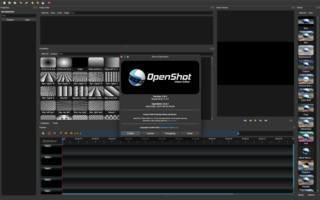
OpenShot Video Editor is a free and open-source video editor for Windows, macOS, Linux, and ChromeOS. The project started in August 2008 by Jonathan Thomas, with the objective of providing a stable, free, and friendly to use video editor.
Media Lovin' Toolkit (MLT) is an open source multimedia framework, designed and developed for television broadcasting. It provides a toolkit for broadcasters, video editors, media players, transcoders, web streamers and many more types of applications. The functionality of the system is provided via an assortment of ready to use tools, XML authoring components, and an extensible plug-in based API.
frei0r is a simple cross-platform framework for video effects. It provides filters, mixers and generators by means of minimalistic plugin API. The behaviour of the effects can be controlled from the host through simple parameters. The intent is to solve the recurring reimplementation or adaptation issue of standard video effects.

The PandaBoard was a low-power single-board computer development platform based on the Texas Instruments OMAP4430 system on a chip (SoC). The board has been available to the public at the subsidized price of US$174 since 27 October 2010. It is a community supported development platform.

Blackmagic Design Pty Ltd. is an Australian digital cinema company and hardware manufacturer based in Port Melbourne, Victoria, Australia. It designs and manufactures broadcast and cinema hardware, most notably high-end digital-movie cameras, and also develops video editing software, such as the DaVinci Resolve and Blackmagic Fusion applications.
pyglet is a library for the Python programming language that provides an object-oriented application programming interface for the creation of games and other multimedia applications. pyglet runs on Microsoft Windows, macOS, and Linux; it is released under the BSD Licence. pyglet was first created by Alex Holkner.

Flowblade Movie Editor is a free and open-source video editing software for Linux.

Olive is a free and open-source cross-platform video editing application for Linux, Windows and macOS. It is currently in alpha.
